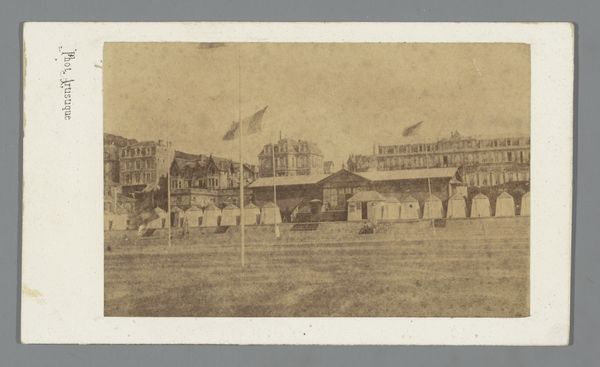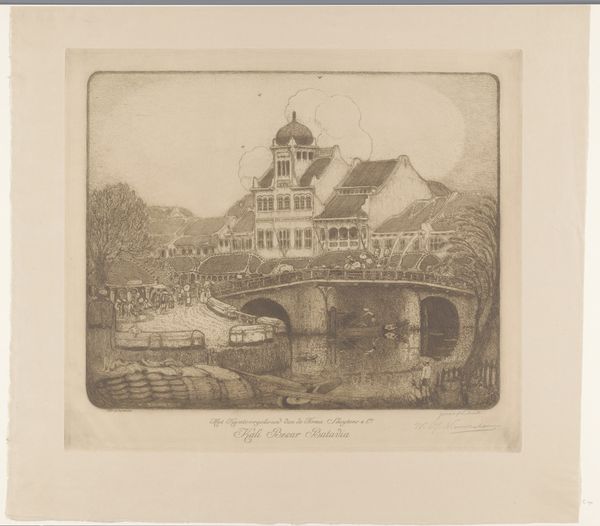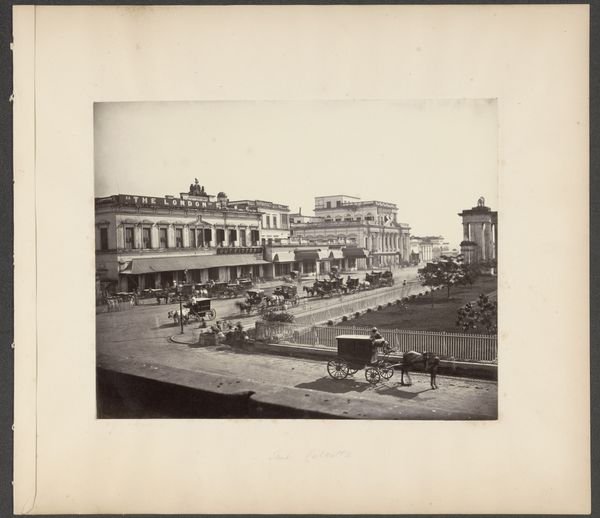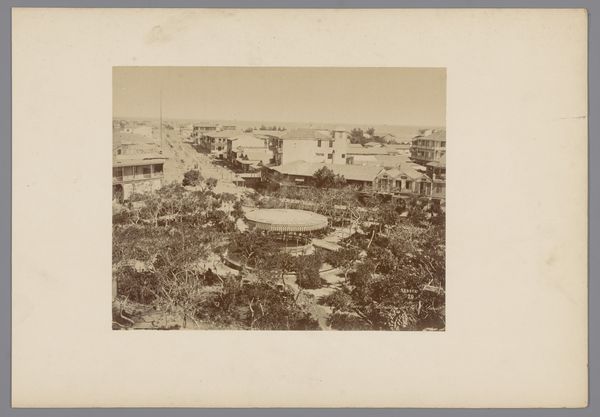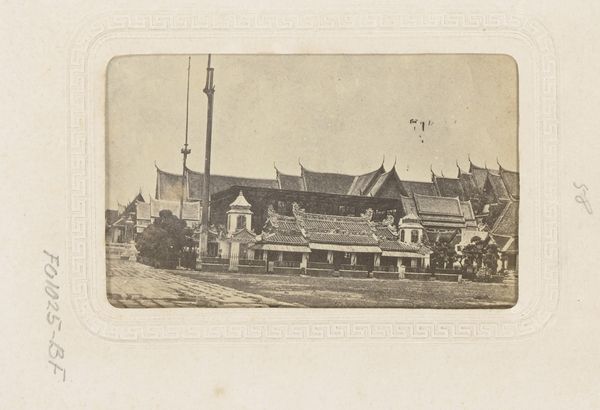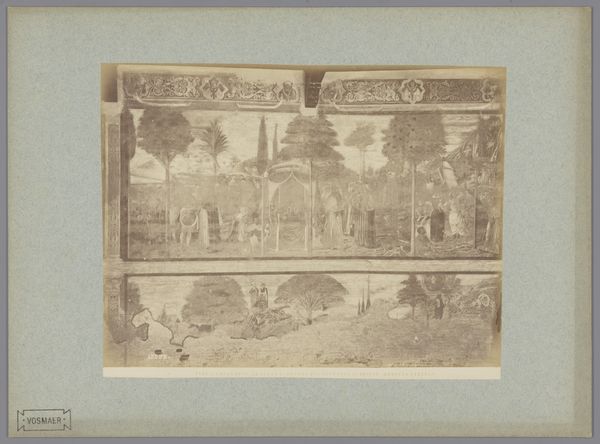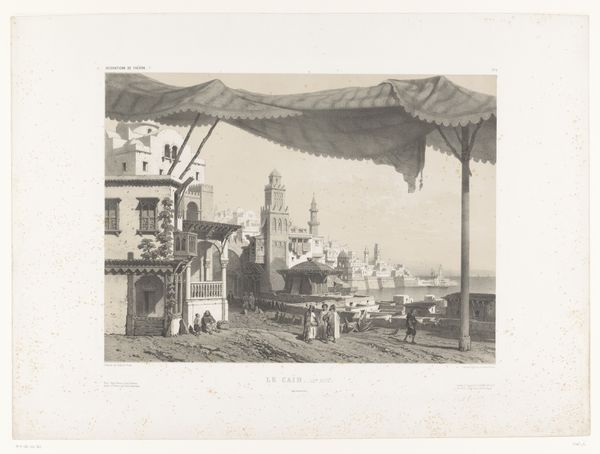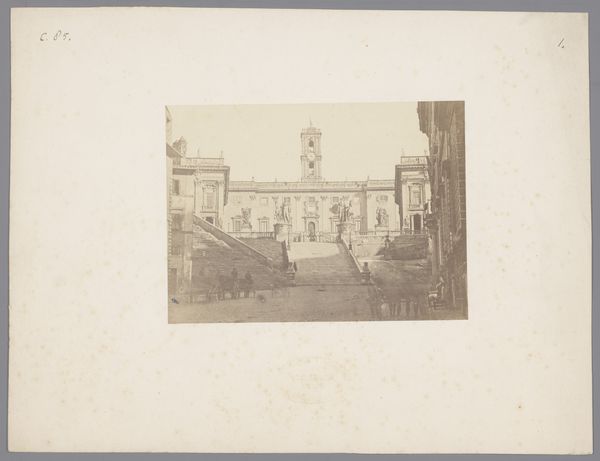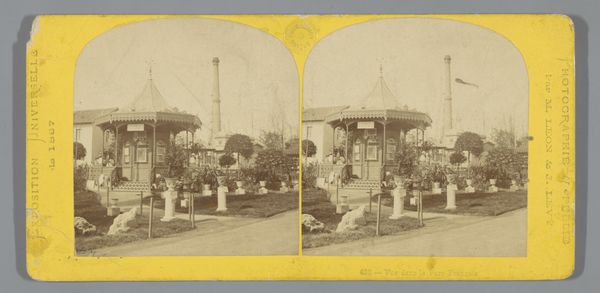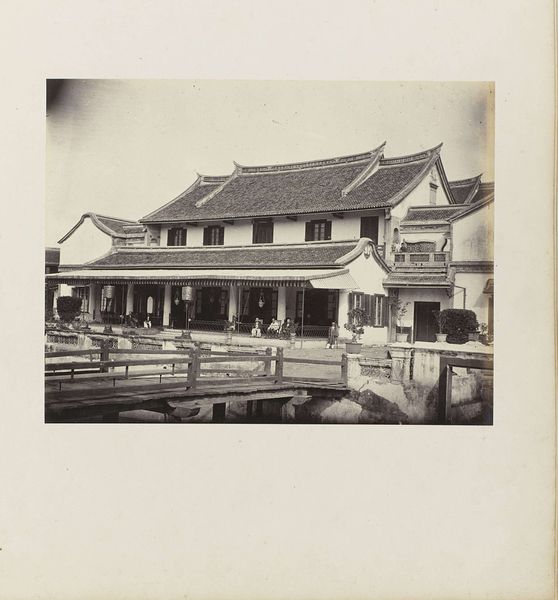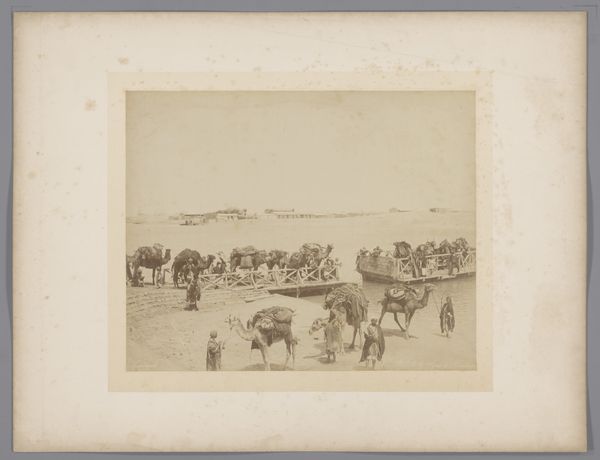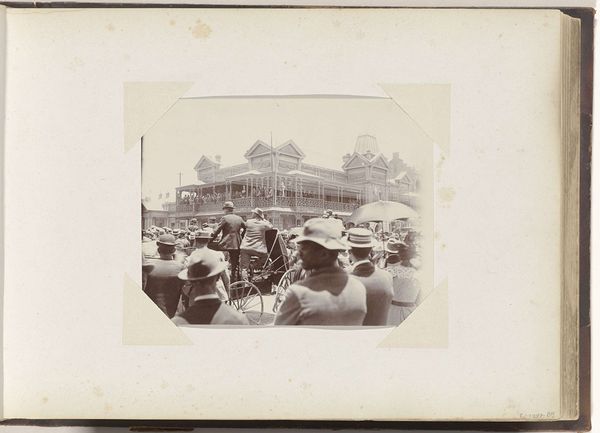
print, photography
# print
#
landscape
#
photography
#
orientalism
Dimensions: height 219 mm, width 276 mm, height 347 mm, width 453 mm
Copyright: Rijks Museum: Open Domain
Curator: This photograph is titled "Gezicht op het Place de Lesseps te Port Said," placing us in Egypt sometime between 1870 and 1910. It's attributed to C. & G. Zangaki. Editor: There’s a hazy dreaminess to it. The light feels so diffused, like a memory struggling to stay sharp. I’m drawn to that central gazebo and how it subtly mirrors the church steeple. Curator: Observe how the composition meticulously arranges horizontal and vertical elements. The rigid architecture and the flowing foliage are presented to subtly clash with the rigid order of the built environment. It seems the photographers were using formal cues in the picture, perhaps to draw attention to themes of exoticism or otherness. Editor: Precisely. And I think the symbolism is even more layered. The church and gazebo, both focal points, represent two distinct spheres: the sacred and the secular. But they mirror each other architecturally, maybe commenting on the collision of Western ideals and local life as Egypt was being reshaped by colonial interests during this time. Curator: A clash of ideologies perhaps also reflected in the print medium itself. The rigidity and precision needed for capturing these colonial structures alongside the spontaneity of the subjects must be interpreted under these contextual parameters. This creates tension and juxtaposition in this piece. Editor: Exactly! The very act of photographing – freezing a moment in time – was an imposition of Western perception on a changing world. The photograph documents both the space and that moment of encounter. Curator: I see a complex network of shapes at play here. It would be interesting to break it down even further from that structuralist perspective. Editor: Indeed. By examining it through an iconographic lens, it becomes a visual statement of cultural dynamics at play during the late 19th century, capturing a pivotal point in history through layered symbolism. Curator: Ultimately, the artwork’s organization can inspire further contemplation. It highlights the dynamics and impact of change, as well as the enduring themes within photographic expression. Editor: This photograph invites us to look deeper than the mere depiction of a place. We’re confronted with history, cultural exchange, and the power of images to evoke lasting legacies.
Comments
No comments
Be the first to comment and join the conversation on the ultimate creative platform.
